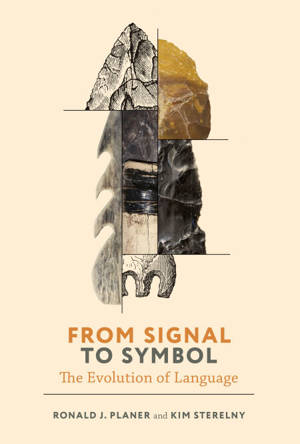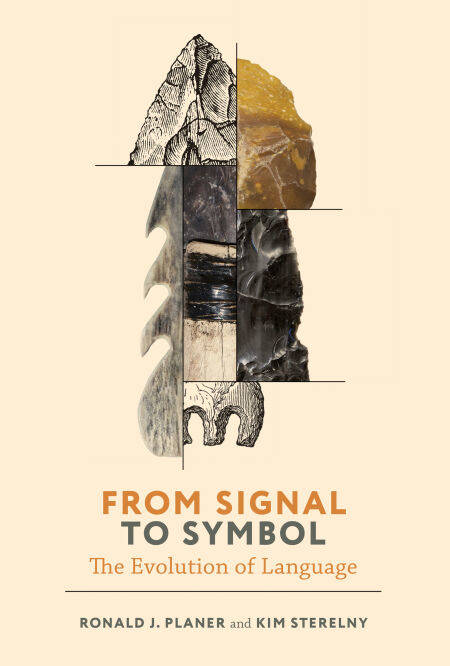
- Afhalen na 1 uur in een winkel met voorraad
- Gratis thuislevering in België vanaf € 30
- Ruim aanbod met 7 miljoen producten
- Afhalen na 1 uur in een winkel met voorraad
- Gratis thuislevering in België vanaf € 30
- Ruim aanbod met 7 miljoen producten
Zoeken
€ 34,49
+ 34 punten
Uitvoering
Omschrijving
A novel account of the evolution of language and the cognitive capacities on which language depends.
In From Signal to Symbol, Ronald Planer and Kim Sterelny propose a novel theory of language: that modern language is the product of a long series of increasingly rich protolanguages evolving over the last two million years. Arguing that language and cognition coevolved, they give a central role to archaeological evidence and attempt to infer cognitive capacities on the basis of that evidence, which they link in turn to communicative capacities.
Countering other accounts, which move directly from archaeological traces to language, Planer and Sterelny show that rudimentary forms of many of the elements on which language depends can be found in the great apes and were part of the equipment of the earliest species in our lineage. After outlining the constraints a theory of the evolution of language should satisfy and filling in the details of their model, they take up the evolution of words, composite utterances, and hierarchical structure. They consider the transition from a predominantly gestural to a predominantly vocal form of language and discuss the economic and social factors that led to language. Finally, they evaluate their theory in terms of the constraints previously laid out.
In From Signal to Symbol, Ronald Planer and Kim Sterelny propose a novel theory of language: that modern language is the product of a long series of increasingly rich protolanguages evolving over the last two million years. Arguing that language and cognition coevolved, they give a central role to archaeological evidence and attempt to infer cognitive capacities on the basis of that evidence, which they link in turn to communicative capacities.
Countering other accounts, which move directly from archaeological traces to language, Planer and Sterelny show that rudimentary forms of many of the elements on which language depends can be found in the great apes and were part of the equipment of the earliest species in our lineage. After outlining the constraints a theory of the evolution of language should satisfy and filling in the details of their model, they take up the evolution of words, composite utterances, and hierarchical structure. They consider the transition from a predominantly gestural to a predominantly vocal form of language and discuss the economic and social factors that led to language. Finally, they evaluate their theory in terms of the constraints previously laid out.
Specificaties
Betrokkenen
- Auteur(s):
- Uitgeverij:
Inhoud
- Aantal bladzijden:
- 296
- Taal:
- Engels
- Reeks:
Eigenschappen
- Productcode (EAN):
- 9780262366021
- Verschijningsdatum:
- 11/10/2021
- Uitvoering:
- E-book
- Beveiligd met:
- Adobe DRM
- Formaat:
- ePub

Alleen bij Standaard Boekhandel
+ 34 punten op je klantenkaart van Standaard Boekhandel
Beoordelingen
We publiceren alleen reviews die voldoen aan de voorwaarden voor reviews. Bekijk onze voorwaarden voor reviews.








